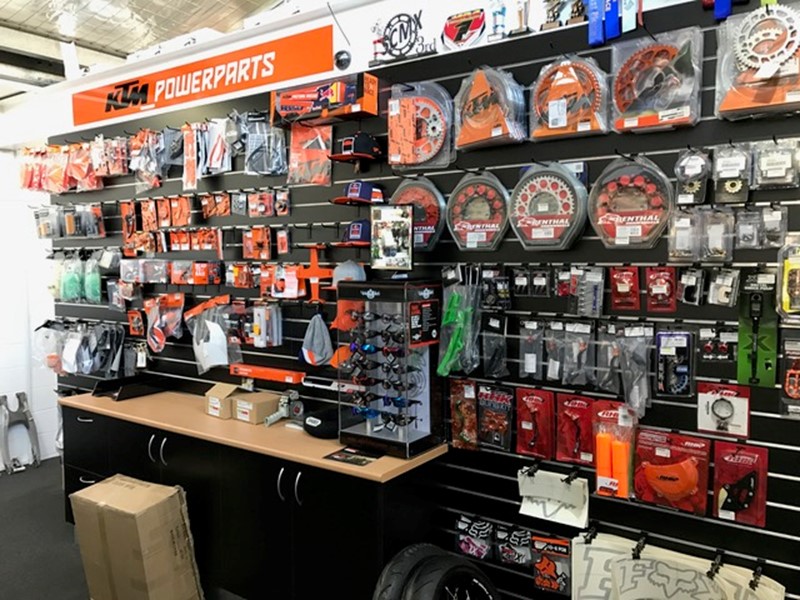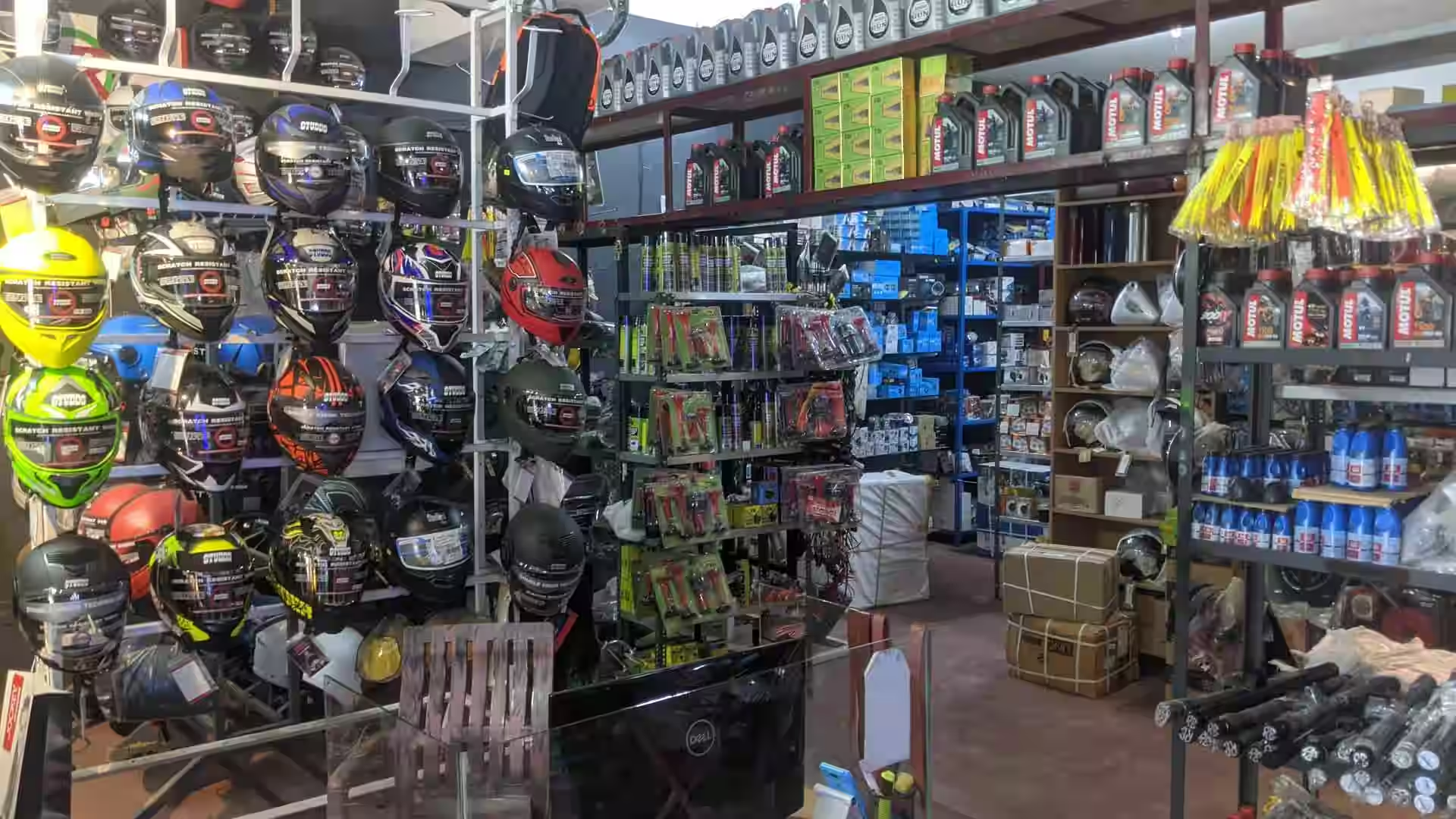Vital Motorcycle Parts NZ for Peak Performance and Security
Vital Motorcycle Parts NZ for Peak Performance and Security
Blog Article
A Detailed Check Out Bike Components: What Every Motorcyclist Must Know
An extensive understanding of bike parts is not just useful yet crucial for any type of motorcyclist aiming to maximize performance and safety. Each element, from the engine's elaborate functions to the reliability of brake systems, plays a pivotal role in the overall experience and functionality of the bike. Past simply recognizing what these parts do, it is necessary to value how they support and interact one another. This interconnectedness can make the distinction between a smooth experience and unanticipated difficulties. What intricacies lie within this mechanical harmony that every rider should master?
Comprehending the Engine
The engine, frequently regarded as the heart of a bike, is an intricate assembly of parts that work in consistency to transform fuel into movement. At its core, the engine's primary function involves the combustion process, where air and fuel mix and ignite within the cyndrical tubes, resulting in controlled explosions that drive the pistons. These pistons go up and down, converting chemical energy right into power, which subsequently transforms the crankshaft, eventually powering the bike.

Comprehending the intricacies of a motorbike engine is vital for cyclists and lovers alike. It not just supplies understanding into just how bikes accomplish their excellent power and speed yet also aids in effective maintenance and troubleshooting, ensuring longevity and reliability when traveling.
Suspension Systems
While the engine powers the motorcycle, the suspension system plays a vital duty in guaranteeing a smooth and regulated experience. The shock absorber is accountable for taking in shocks from the roadway surface, preserving tire contact, and offering stability during cornering and stopping. It comprises 2 primary parts: the front forks and the back shock absorbers.
Front forks are usually telescopic, including a springtime and dampening mechanism. The spring expands and presses to absorb bumps, while the moistening mechanism controls the movement to protect against excessive bouncing. This mix ensures the front wheel remains touching the road, offering remarkable handling and convenience.
The back suspension, normally a monoshock or twin-shock arrangement, functions in a similar way to the front suspension however is tailored to support the bike's weight and rider - motorcycle shop. It takes care of rear wheel motion, adding to the bike's general balance and responsiveness
Suspension systems can be flexible, permitting bikers to fine-tune preload, compression, and rebound setups according to personal choices and riding conditions. This adjustability enhances performance by optimizing the bike's interaction with diverse terrains. In recap, a reliable shock absorber is vital for biker comfort, security, and the motorcycle's managing expertise.
Brake Parts
Quiting power next is a fundamental element of motorcycle safety, and it rests on the efficiency of the brake components. The main aspects of a bike's braking system include the brake pads, calipers, blades, and master cyndrical tube. motocross gear. Each of these components plays a vital role in making sure effective stopping efficiency
Brake pads are important as they produce the essential rubbing against the rotors to reduce down or quit the motorcycle. Created from products such as sintered metal or natural composites, the selection of brake pad material substantially impacts performance and long life. Calipers, real estate the brake pads, apply pressure to the pads when the brake bar is involved, helping with call with the rotors.
The rotors, usually made from stainless-steel or cast iron, are mounted to the wheels and work as the surface area versus which the brake pads press. Their style, consisting of size and thickness, affects warm dissipation and stopping power. The master cyndrical tube, attached to the brake bar, produces hydraulic pressure transferred through brake lines to the calipers, making sure regular stopping force.
Normal maintenance and inspection of these components are important for optimal performance, stopping wear and ensuring biker safety and security when driving.
Tire Basics
Beyond keeping durable stopping systems, guaranteeing optimal tire efficiency is similarly substantial for motorcycle safety and security and performance. Tires are the single call factor between the motorbike and the roadway, making their problem critical in managing, stability, and total trip quality.

Additionally, think about the tire's age. Rubber substances deteriorate over time, even if step shows up appropriate. Check the sidewall for the DOT (Department of Transport) code to ascertain the tire's age. Commonly, replacement is suggested every five years, despite wear. Spending attention in these tire basics not only enhances efficiency however additionally dramatically enhances riding security.
Electrical Equipments
In the world of motorbike upkeep, the electrical system plays a critical role in making sure reputable performance and cyclist safety and security. This elaborate network includes vital components such as the battery, generator, starter electric motor, and wiring harness. Each aspect is essential for the seamless operation of the motorbike, from ignition to illumination and interaction with various sensors.
The battery functions as the heart of the electric system, supplying the necessary power to start the engine and operate accessories. On a regular basis examining the battery's voltage and terminals for deterioration is critical to avoid unanticipated failings. The generator, on the other hand, reenergizes the battery while the engine is running, making sure a continual power supply.
To maintain it, riders ought to pay focus to any type of uncommon sounds or problems throughout startup. Making certain that the cables are cost-free and undamaged from damage is important for avoiding brief circuits and making certain functionality.
Verdict

Quiting power is a basic element of motorcycle safety, and it hinges on the explanation effectiveness of the brake parts. The primary elements of a motorcycle's stopping system include the brake pads, calipers, rotors, and master cyndrical tube.Brake pads are essential as they develop the necessary rubbing versus the rotors to reduce down or quit the motorbike.Beyond preserving robust stopping systems, guaranteeing optimal tire efficiency is similarly considerable for motorcycle safety and security and performance.In the realm of bike maintenance, the electrical system plays a critical duty in guaranteeing trusted performance and biker safety.
Report this page